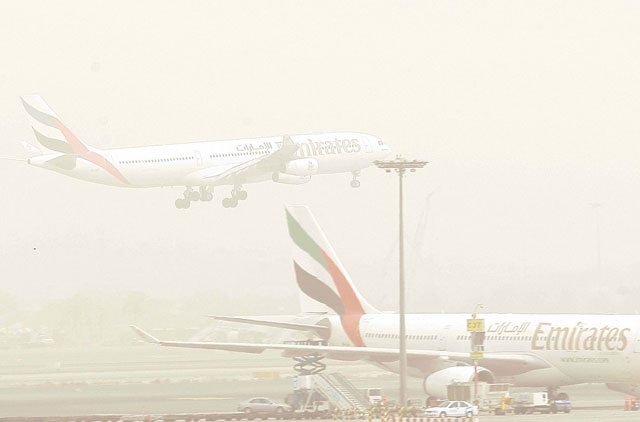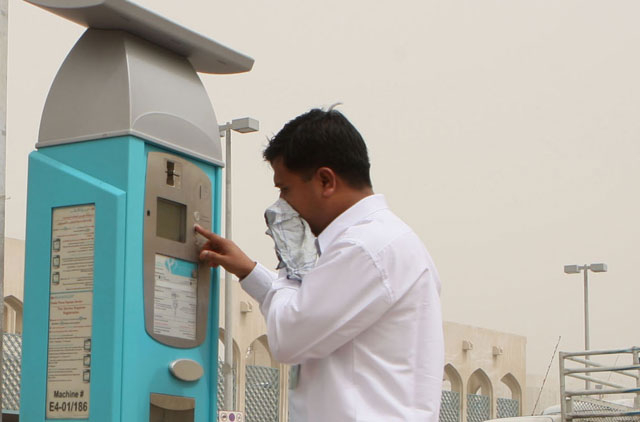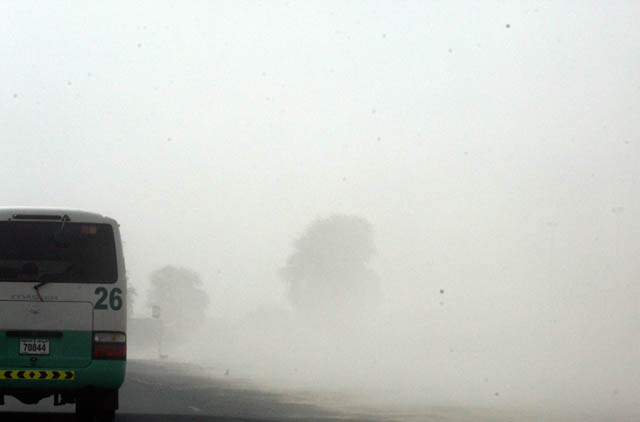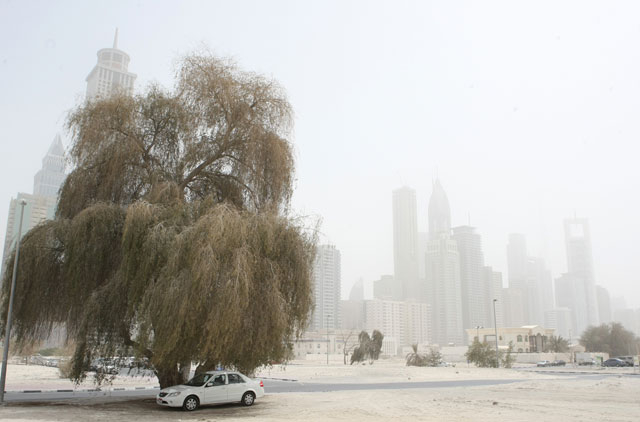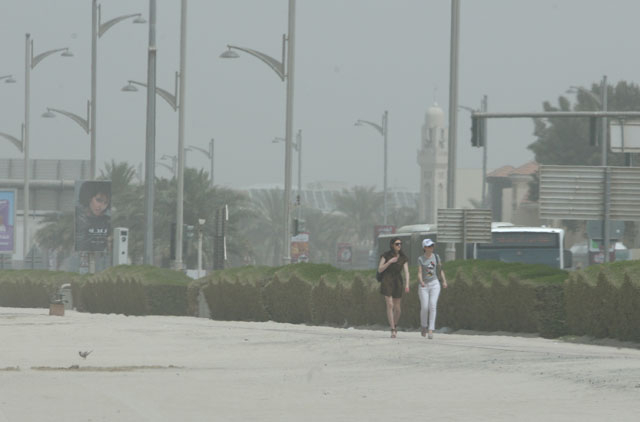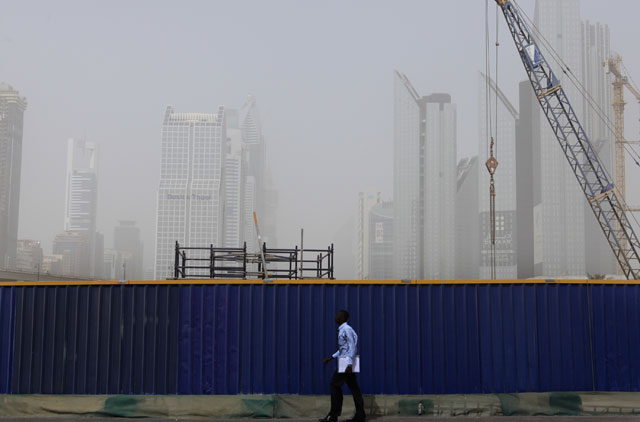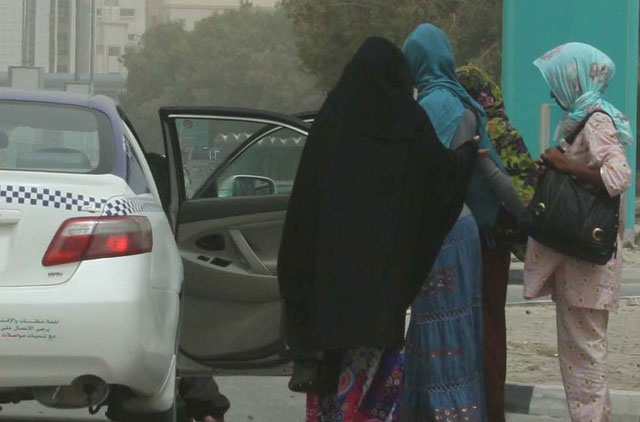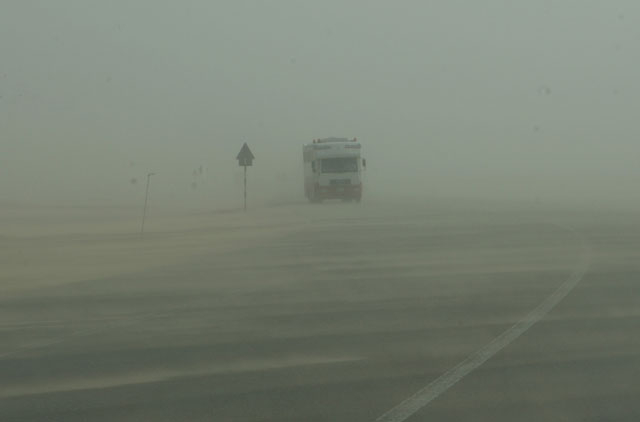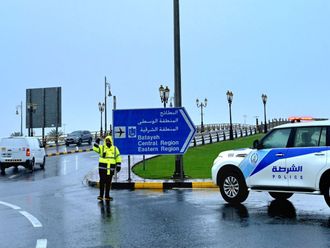
Al Ain: The widespread storm, which has laid a veil of fine dust across most of the GCC, will gradually clear off by tomorrow and temperatures will start to climb again, weather forecasters said yesterday.
The powerful storm, described by several meteorologists as the ‘Super Sandstorm', has affected the entire Arabian Gulf and parts of Southeast Asia. Conditions took an awful turn when two storms from different directions clashed, with the impact felt across the Arabian Peninsula.
Air traffic has been disrupted in some countries, with the lives of many knocked out of balance. Schools in Bahrain and Saudi Arabia were closed while hospitals have been inundated by a high number of people suffering from dust allergies, aggravated asthma and other respiratory problems.
Sea travellers and fishermen are waiting for calmer waters in both the Arabian Gulf and the Gulf of Oman where high waves have been witnessed recently.
The first front that hit the area four days ago brought in sand and dust from Iraq and Kuwait. A second front causing low pressure later moved eastward, reaching south-eastern Iran and kicking up dust and sand on Monday that engulfed the northern region of the UAE and parts of Oman. For many it was the worst dust storm in recent years.
The National Centre of Meteorology and Seismology (NCMS), however, said strong north-westerly winds are a normal phenomenon that can occur in both winter and summer seasons.
"They [the winds] may accompanied by dust like what happened yesterday [Monday] and four days ago," said an NCMS official.
The high amount of dust is a result of the nature of the land over which the wind passes through.
The NCMS said that Iraq, in recent years, had lost its most arable land and was in the throes of desertification, where arid land is eventually transformed into a dust bowl.
"When a north-westerly wind passes over [such an environment], it raises dust from there and passes it on to the neighbouring countries," the official said.
While the currents of Shamal winds are normal, the desertification along their route is the real culprit responsible for packing them with dust before they enter the region.
Both Iran and Pakistan are afflicted by desertification. The NCMS official said the southern part of Pakistan and the eastern part of Iran (Sistan Province) are semi-arid lands from where the winds picked up dust and pushed it towards the UAE.
"The current dusty weather will be clear gradually on Thursday and the temperature will increase," he said.
Breathing problems
The storm, however, created severe visibility problems across the country, blocking sunlight and coating everything with a cover of orange-coloured fine dust. Its severity was much higher in some areas such as Ras Al Khaimah and Fujairah, where the dust not only made breathing difficult but enveloped buildings and trees, making them difficult to spot even at a close distance.
The frequency of dust storms has left many baffled.
"Why so many sandstorms?" asked Jacob Pereira, an Al Ain resident, guessing that it could be a result of global warming. He said the storms have been coming in quick succession over the last two months.
Apart from the dust, weather conditions are cooler in the daytime, with the maximum temperature falling by several degrees. Temperatures fell from 37 degrees Celsius recorded a few days ago to just to 18C.
Dust storms, coupled with the sudden decline in temperatures, pose health risks, Dr Riaz Ahmad Minhas, a specialist in family medicines at the Emirates Clinic and Medical Services Centre, told Gulf News.
He advised people to stay indoors or wear face masks to reduce the impact of dust on their health.
Those who suffer the most are infants, young children, the elderly, and people with respiratory conditions such as asthma, bronchitis, and emphysema. Exposure to dust could trigger allergic reactions, asthma attacks, and serious breathing problems. If anyone experiences problems, they should seek immediate medical assistance, Dr Minhas said.


